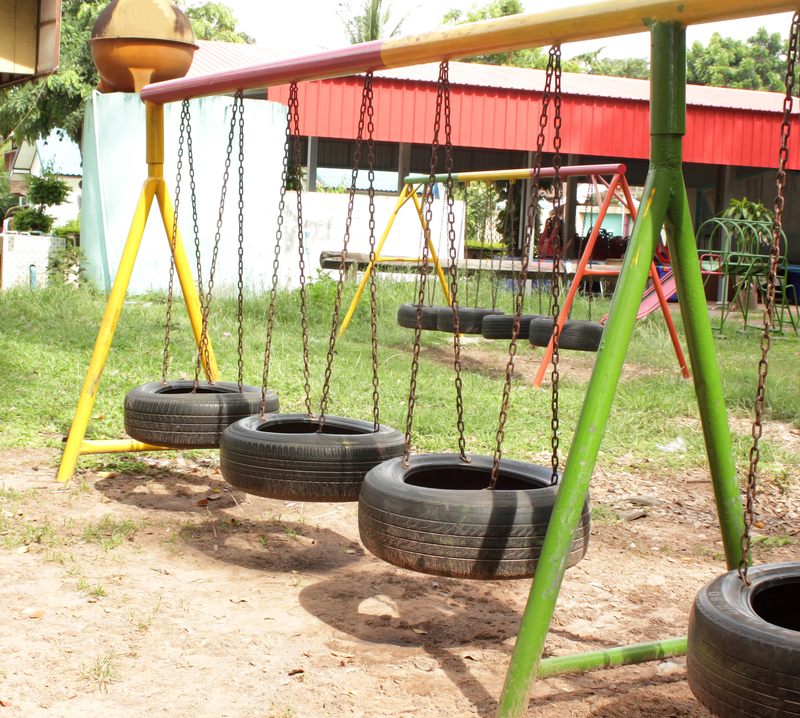Understanding Hazardous Waste: A Quick Guide
Hazardous waste is a critical yet often overlooked aspect of environmental care and safety. Properly identifying, handling, and disposing of this kind of waste helps protect human health and the environment. In this comprehensive guide, we'll deep dive into what hazardous waste is, its types and classifications, regulations surrounding its management, and effective ways to handle hazardous waste responsibly. Read on to discover all you need to know about hazardous waste, ensuring your practices are eco-friendly and in full compliance with regulations.

What is Hazardous Waste?
Hazardous waste refers to any material, either solid, liquid, or gas, that poses substantial or potential threats to public health or the environment. These materials display one or more dangerous characteristics such as toxicity, ignitability, corrosivity, or reactivity. Recognizing the various forms and dangers of hazardous material is essential for effective waste management.
Characteristics of Hazardous Waste
- Toxicity: The ability to cause harm or death if ingested or absorbed.
- Ignitability: Easily combustible and can start fires.
- Corrosivity: Can corrode metals or destroy living tissue on contact.
- Reactivity: Can produce dangerous chemical reactions.
These properties make it clear why safety and proper disposal are vital. Neglecting hazardous waste management can result in severe environmental damage and health risks.
Types of Hazardous Waste
Understanding the different types of hazardous wastes helps organizations and individuals handle them correctly. The main categories include:
1. Listed Waste
- Found on specific EPA lists (F-list, K-list, P-list, and U-list).
- Often produced by manufacturing processes, pharmaceutical production, or laboratory work.
2. Characteristic Waste
- Not specifically listed but exhibits properties like ignitability, corrosivity, reactivity, or toxicity.
3. Universal Waste
- Includes items like batteries, pesticides, lamps, and some electronics.
- Easier to handle and recycle under specific streamlined regulations.
4. Mixed Waste
- Contains both radioactive and hazardous chemical components.
- Requires special handling due to combined dangers.
Understanding these classifications is the first step in ensuring hazardous substances are managed correctly and safely.
Common Examples of Hazardous Waste
Industrial Waste
- Solvents and paints from manufacturing.
- Sludges and chemicals from metal fabrication or chemical manufacturing.
Household Hazardous Waste
- Pesticides, herbicides, and insecticides.
- Cleaning products with corrosive ingredients.
- Batteries, fluorescent bulbs, and electronics.
Medical Waste
- Pharmaceuticals and laboratory reagents.
- Contaminated sharps and personal protective equipment (PPE).
Why Proper Identification Matters
Incorrectly identifying waste can lead to improper disposal, amplifying risks to workers, communities, and wildlife.
Regulatory Framework and Compliance
Managing hazardous waste is heavily regulated, especially in countries like the United States. The Environmental Protection Agency (EPA) sets federal guidelines, while state agencies may add local rules. Adhering to regulations not only prevents environmental contamination but also shields businesses from legal and financial repercussions.
Key Regulations in Hazardous Waste Management
- Resource Conservation and Recovery Act (RCRA) - Governs the generation, transportation, treatment, storage, and disposal of hazardous waste.
- Comprehensive Environmental Response, Compensation, and Liability Act (CERCLA) - Also known as Superfund, addresses contamination from unmanaged hazardous waste.
- International Conventions - The Basel Convention and others manage the transfer of hazardous wastes across borders.
Hazardous Waste Identification Process
- Determine if the substance is excluded or exempt.
- Check if it is on an EPA hazardous waste list.
- Test for dangerous characteristics (ignitability, corrosivity, reactivity, toxicity).
Regulatory compliance ensures that all parties involved in the waste lifecycle are conscious of their responsibilities and consequences.
Safe Handling and Storage of Dangerous Waste
Proper handling and storage are critical to preventing accidents, poisonings, and environmental releases of hazardous waste. Here are some key principles:
Key Strategies for Safe Materials Handling
- Use personal protective equipment (PPE) such as gloves, masks, and goggles.
- Label containers clearly with the type of waste and hazard symbols.
- Store hazardous materials in certified, leak-proof containers.
- Keep incompatible substances separate - For example, acids and bases or oxidizers and flammables.
- Limit access to storage areas to trained personnel only.
- Maintain an up-to-date inventory and record of all hazardous waste stored onsite.
Consistent training and awareness programs greatly minimize the risks associated with hazardous substances.
Proper Disposal Techniques for Hazardous Waste
Key Disposal Methods
- Incineration: Burns hazardous waste at high temperatures, reducing volume and destroying toxins - suitable for organic waste.
- Landfill: Specially designed hazardous waste landfills isolate dangerous materials from people and the environment.
- Recycling and Recovery: Certain materials like solvents, oils, and metals can be treated, purified, or repurposed.
- Chemical Treatment: Neutralizes or changes the waste's hazardous properties.
- Biological Treatment: Uses microorganisms to break down certain organic toxins (bioremediation).
Household Hazardous Waste Collection
- Many communities offer collection days for residents to safely dispose of items like batteries, electronics, and chemicals.
- Retail stores sometimes accept items such as used light bulbs or paint for recycling.
Never dispose of hazardous waste in regular trash, sewage, or drains--this is illegal and extremely harmful to the environment.
Environmental and Health Impacts of Improper Hazardous Waste Management
Risks of Improper Disposal
- Soil contamination leading to impaired agriculture and the food chain.
- Water pollution as toxins leach into aquifers, rivers, and lakes.
- Air pollution from burning untreated hazardous waste releases toxic fumes and particulates.
- Health hazards including respiratory problems, chemical burns, neurological disorders, reproductive issues, and cancers.
- Ecosystem disruptions as wildlife are poisoned or habitats are destroyed.
Long-term exposure can irreversibly damage both environmental and human health, making it essential to prioritize safe hazardous waste management practices.
Best Practices for Businesses and Households
For Businesses
- Conduct routine hazardous waste audits to monitor waste streams and volumes.
- Train employees regularly in hazard recognition and emergency response.
- Work with certified hazardous waste disposal professionals.
- Stay abreast of all changes in environmental laws and local regulations.
For Households
- Read product labels to identify potential household hazardous waste.
- Choose less toxic alternatives when available.
- Store hazardous products safely away from children and pets.
- Participate in community hazardous waste disposal events.
Reducing hazardous waste at the source--using less, reusing materials, and recycling--provides the most sustainable and cost-efficient solution for individuals and organizations alike.
The Role of Recycling in Hazardous Waste Management
Recycling hazardous waste reduces the amount produced and helps conserve resources. Materials such as used oil, batteries, antifreeze, and certain chemicals can often be reclaimed or reused. Effective recycling programs not only cut down on pollution but often yield lower disposal costs and regulatory advantages for businesses.
Recycling Initiatives to Know
- Battery recycling drives at electronics retailers and local governments.
- Automotive oil recycling at service stations or community collection centers.
- Safe paint and chemical take-back programs for household and commercial sources.
Innovative recycling solutions continue to improve, making it easier and more practical to divert hazardous materials from landfills while reclaiming valuable resources.

Emerging Trends and Innovations in Hazardous Waste Management
With increasing awareness and stricter regulations, hazardous waste management is evolving rapidly. Some exciting emerging trends include:
- Advanced chemical neutralization technologies that render waste harmless with minimal byproducts.
- Smart monitoring systems that track hazardous waste containers, ensuring safe storage and transportation.
- Green chemistry innovations reducing the use or creation of hazardous by-products in industrial processes.
- 3D printing and circular economy approaches to reclaim and repurpose hazardous materials.
By staying informed and embracing new technologies, organizations can minimize risks and costs while contributing positively to environmental stewardship.
Conclusion: Responsible Hazardous Waste Management Benefits Us All
Understanding hazardous waste--and the dangers it presents--empowers individuals, organizations, and communities to act responsibly. Comprehensive management involves proper identification, storage, disposal, and recycling of hazardous materials, all under the umbrella of regulatory compliance. By adopting best practices and staying alert to new developments in hazard mitigation, we protect our health, our ecosystems, and the future of our planet.
Whether you are a business owner, facility manager, homeowner, or student, recognizing your role in managing hazardous waste effectively is a crucial step toward a cleaner, safer world. Let's all contribute by staying informed and acting responsibly with every hazardous item we encounter.